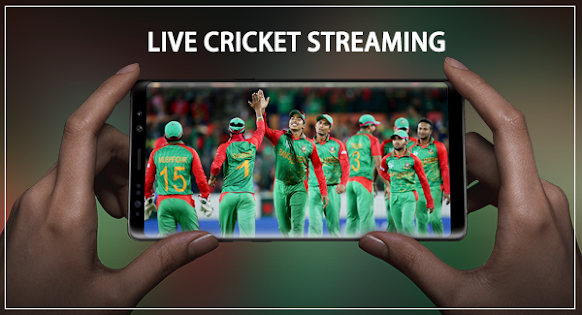
Cricket, a sport deeply ingrained in the cultural fabric of many nations, has witnessed a remarkable transformation in its commercialization and global reach. Among the architects of this evolution is Harish Thawani, a stalwart in sports broadcasting who has played a pivotal role in reshaping cricket’s television market. His insights, shared on the latest episode of “Bombay Sport Exchange,” illuminate the watershed moments that have defined the sport’s journey into the modern era.
The Rise of Cricket Broadcasting
Television broadcasting of cricket began modestly, with limited resources and reach. However, the advent of satellite technology in the 1990s marked a seismic shift. This period saw cricket expanding beyond the confines of stadiums and becoming accessible to millions of viewers in their homes. For the first time, fans from remote areas could experience the thrill of live cricket, breaking barriers of geography and social status.
The pivotal moment came with the introduction of colored clothing, white balls, and night cricket during the Kerry Packer World Series in the late 1970s. While controversial at the time, this tournament laid the foundation for cricket as an entertainment product. Broadcasters realized the immense potential of cricket as a medium to attract advertisers, and this realization spurred significant investments in the sport.
The World Series Cricket (WSC) not only reshaped how cricket was played but also revolutionized its broadcasting. Before WSC, cricket matches were often filmed with minimal camera setups, and commentary was basic. The WSC introduced multiple camera angles, on-screen graphics, and instant replays—features that are now indispensable. These innovations significantly enhanced the viewer’s experience and set a benchmark for future broadcasts.
Harish Thawani’s Visionary Role
Harish Thawani, a visionary entrepreneur, identified cricket’s untapped potential in the television market. By pioneering innovative broadcasting techniques and creating compelling narratives around the game, Thawani elevated cricket’s appeal. His efforts were instrumental in securing lucrative broadcasting rights, which, in turn, transformed cricket into a billion-dollar industry.
One of Thawani’s key contributions was the conceptualization of tailored content. Recognizing that cricket had a diverse audience base, he championed region-specific broadcasting. This strategy ensured that cricket commentary, graphics, and presentations resonated with local cultures and languages, thereby enhancing viewer engagement.
Moreover, Thawani advocated for the inclusion of behind-the-scenes content and player interviews. These elements added a human touch to broadcasts, helping fans connect with players on a personal level. The storytelling aspect of cricket broadcasts became a critical factor in retaining viewer interest.
The IPL Phenomenon
The Indian Premier League (IPL) is undeniably one of cricket’s most significant milestones. Launched in 2008, the IPL revolutionized the sport by introducing a franchise model inspired by American sports leagues. The league’s success owes much to its television presentation, which combined high-octane cricket action with glamorous entertainment.
Harish Thawani’s insights into the IPL underscore its role as a game-changer. He emphasizes how the league’s strategic partnership with broadcasters elevated the viewing experience. Advanced technologies like UltraEdge, SpiderCam, and player mic-ups brought fans closer to the action. Furthermore, the league’s marketing campaigns, such as “India ka Tyohaar” (India’s Festival), positioned the IPL as more than just cricket, making it a cultural phenomenon.
The IPL’s unique format of short, intense matches made it ideal for prime-time television. Its scheduling during the evening hours ensured maximum viewership, while the inclusion of Bollywood celebrities and extravagant opening ceremonies added to its glamour. Broadcasters capitalized on these factors to attract advertisers, resulting in record-breaking revenue figures.
Technological Innovations in Cricket Broadcasting
Technological advancements have been at the heart of cricket’s television revolution. From the introduction of Hawk-Eye for ball tracking to the Decision Review System (DRS), technology has not only enhanced the accuracy of the game but also enriched the viewing experience. Harish Thawani highlights the importance of investing in technology to maintain cricket’s appeal in an era of digital disruption.
The rise of streaming platforms has further expanded cricket’s reach. Viewers now have the flexibility to watch matches on-demand, access player statistics in real-time, and enjoy multi-camera angles. This shift towards digital consumption has opened new revenue streams for broadcasters, including targeted advertising and subscription models.
The incorporation of virtual and augmented reality (VR/AR) into broadcasts represents the next frontier. Fans can now immerse themselves in a virtual stadium environment or analyze a bowler’s delivery from a 360-degree perspective. These innovations are redefining how cricket is consumed, making it more interactive and engaging.
The Globalization of Cricket
Cricket’s global footprint has grown significantly in the past two decades. The advent of T20 cricket has played a crucial role in popularizing the sport in non-traditional markets. Nations like the United States, Canada, and Germany are witnessing a surge in cricket’s popularity, thanks to innovative broadcasting strategies that cater to local audiences.
Harish Thawani’s observations highlight the role of media in driving this globalization. He points out how tournaments like the ICC Cricket World Cup and T20 World Cup have become global spectacles, drawing millions of viewers from across the world. Strategic partnerships with international broadcasters have ensured that cricket reaches every corner of the globe.
The growth of cricket leagues in countries such as Australia (Big Bash League), Pakistan (PSL), and England (The Hundred) further underscores the sport’s global appeal. These leagues have adopted the IPL’s successful model, focusing on entertainment, technology, and viewer engagement. The result has been a surge in viewership and sponsorships, contributing to cricket’s economic growth.
The Economics of Cricket Broadcasting

The economics of cricket broadcasting is a fascinating subject. Over the years, the cost of acquiring broadcasting rights has skyrocketed, reflecting the sport’s growing value. In India, cricket broadcasting rights are among the most expensive in the world, with companies like Star India and Sony Pictures Networks investing billions to secure them.
Harish Thawani’s role in shaping these dynamics cannot be overstated. By emphasizing the importance of storytelling, branding, and fan engagement, he has helped broadcasters justify their investments. The symbiotic relationship between cricket boards, broadcasters, and advertisers has ensured the sport’s sustained growth.
Sponsorships play a critical role in the economics of cricket broadcasting. Major brands vie for advertising slots during high-profile matches, often paying a premium for prime-time visibility. Thawani’s strategies in creating value for sponsors have been instrumental in maximizing revenue and driving the industry forward.
Challenges and the Road Ahead
Despite its successes, cricket broadcasting faces several challenges. The rising cost of rights, the threat of piracy, and the competition from other sports are significant concerns. Harish Thawani advocates for a forward-looking approach to address these issues. He stresses the importance of innovation, collaboration, and adaptability to ensure cricket remains relevant in an ever-changing media landscape.
One of the emerging trends is the integration of artificial intelligence (AI) and data analytics into broadcasting. These technologies have the potential to personalize the viewing experience, providing fans with insights tailored to their preferences. Additionally, the focus on sustainability and social responsibility is becoming increasingly important in cricket’s narrative.
The fragmentation of viewership across multiple platforms is another challenge. Traditional broadcasters must compete with digital giants like YouTube, Amazon Prime, and Netflix, which are entering the sports broadcasting space. To stay competitive, broadcasters must embrace hybrid models that combine live coverage with on-demand content and interactive features.
Conclusion
Cricket’s journey from a gentleman’s game to a global entertainment powerhouse is a testament to the power of visionaries like Harish Thawani. His contributions to the television market have not only enhanced the sport’s appeal but also ensured its financial stability. As cricket continues to evolve, the lessons from its past successes and challenges will be invaluable in shaping its future.
The story of cricket’s television market is one of innovation, resilience, and adaptability. It underscores the importance of embracing change while staying true to the essence of the sport. With leaders like Harish Thawani at the helm, cricket is well-poised to navigate the challenges of the modern era and continue captivating audiences worldwide.
As cricket’s global audience grows, so does its responsibility to uphold the values of inclusivity and fair play. The next phase of cricket broadcasting will likely focus on creating a more immersive, equitable, and sustainable ecosystem for fans, players, and stakeholders alike. The journey is far from over, and the future promises to be as exciting as the game itself.

